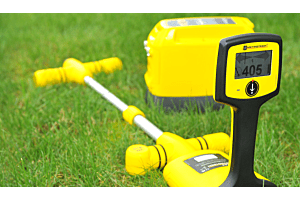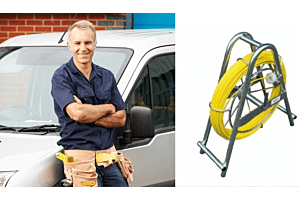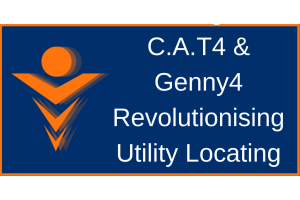
Introduction to Cable Locating
Accurate cable locating is not just a technical requirement but a critical safety measure. The process involves identifying and marking underground utilities like electrical lines, gas pipelines, and water mains. Incorrect or imprecise locating can lead to disastrous consequences, including costly damages and dangerous accidents. This article aims to provide you with valuable tips, best practices, and expert insights to improve your cable locating skills.
Tip 1: Understanding Different Cable Locating Methods
Understanding the various methods available for cable locating is the first step towards accurate utility detection. Here are some commonly used techniques:
Electromagnetic Field Detection
This method uses electromagnetic fields to detect the location of underground utilities. A transmitter sends a signal down the utility line, and a receiver picks up this signal above ground.
Ground Penetrating Radar (GPR)
GPR uses high-frequency radio waves to create images of subsurface structures. It's particularly useful for detecting non-metallic utilities like plastic water lines.
Direct Connect Methods
In this method, a physical connection is made to the utility line, and a signal is sent down the line for the receiver to detect.
By understanding these methods, you can choose the most appropriate one for your specific project needs.
Tip 2: Selecting the Right Cable Locator Equipment
Choosing the right equipment is crucial for effective cable locating. Here are some factors to consider:
Type of Utility
Different utilities may require specialized equipment. For instance, locating a gas pipeline may require a different set of tools compared to an electrical line.
Soil Conditions
Soil conditions can affect the effectiveness of your equipment. Wet or clayey soil may require a more powerful locator.
Budget
High-quality equipment may be expensive but can save you from the costly mistakes that cheap, unreliable tools can cause.
Tip 3: Preparing for Cable Locating
Before you start with the actual locating process, preparation is key. Here are some steps to follow:
Site Evaluation
Conduct a thorough site survey to identify potential hazards and obstacles.
Clearing the Area
Remove any obstructions like rocks, debris, or vegetation from the locating area.
Using Trace Rods
Trace rods can help in guiding the locator more accurately to the utility line.
Tip 4: Proper Use of Cable Locators
Once you're prepared, it's time to use your cable locator effectively. Here are some tips:
Adjusting Receiver Gain
The receiver gain helps in amplifying the signal. Make sure it's adjusted to a level where the locator can pick up the utility line but not other distractions.
Locating the Strongest Signal
Always aim to locate the strongest signal as it usually indicates the utility line's exact position.
Interpreting Results
Understanding the readings is crucial. Make sure you're familiar with what each signal and number means on your locator.
Tip 5: Managing Interference and Soil Conditions
Interference from other utilities or electromagnetic sources can affect your readings. Here are ways to manage them:
Use of Low-Frequency Signals
Low-frequency signals are less likely to jump to other utilities, providing a more accurate reading.
Soil Adaptation
Different soils have different conductive properties. Adjust your equipment settings according to the soil type for more accurate results.
Tip 6: Depth Estimation and Accuracy
Depth estimation is often challenging but crucial for any excavation work. Here are some tips:
Use of Signal Strength
A stronger signal usually indicates that the utility line is closer to the surface.
Calibration
Regularly calibrate your equipment to ensure its depth estimation features are accurate.
Tip 7: Maintenance and Care of Cable Locators
Regular maintenance ensures that your equipment is always in optimal condition. Make sure to clean the device after each use and store it in a dry place.
Conclusion
Accurate cable locating is essential for the safety and success of any excavation or utility repair work. By understanding the different methods, selecting the right equipment, and following best practices, you can significantly improve your cable locating skills.
People Also Ask
- How can I improve my cable locating skills?
Improving your cable locating skills involves understanding different methods, using the right equipment, and following best practices.
- What are the best practices for utility locating?
Best practices include thorough site preparation, proper use of equipment, and regular maintenance.
- What methods are used for cable locating?
Common methods include electromagnetic field detection, ground penetrating radar, and direct connect methods.
- How do I avoid interference during cable locating?
You can avoid interference by using low-frequency signals and adjusting your equipment settings according to the soil conditions.






Login and Registration Form